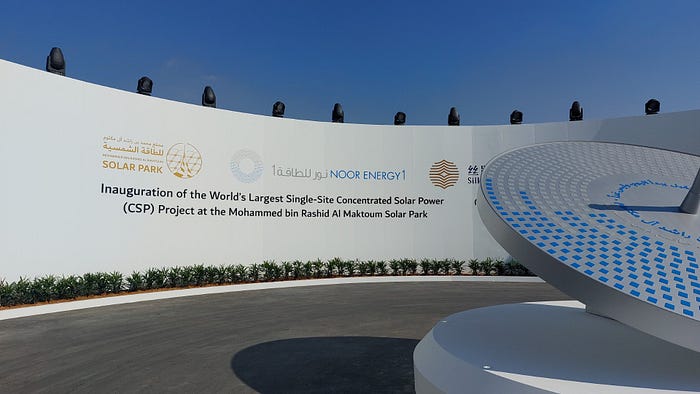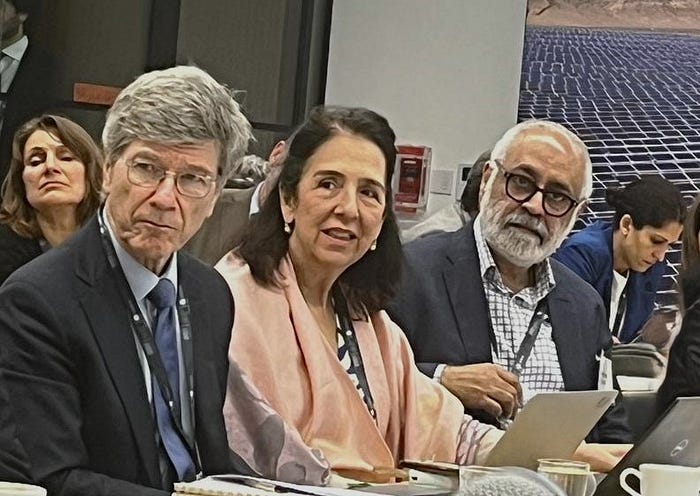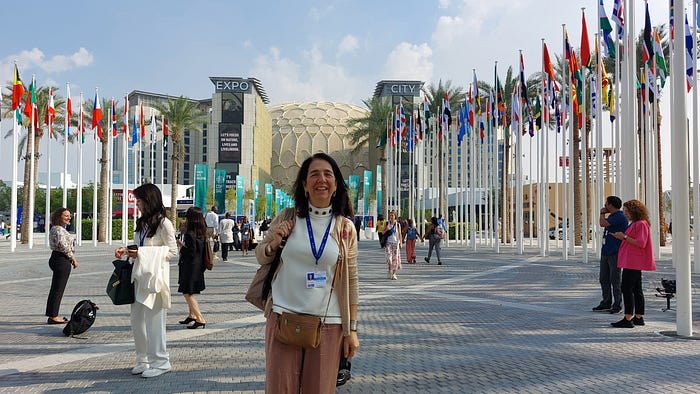Climate change is the challenge of our century. But how are we faring in our efforts to address and solve it? I have participated in the negotiation processes of the UNFCCC from the beginning, and I'd like to reflect on what has been achieved and, quite frankly, what has not been achieved after 32 years of the convention's adoption.
The Climate Convention (UNFCCC) was signed in 1992. Since then, 198 countries have ratified the convention and worked systematically to address climate change. I wish things were different and more had been achieved at this point. Still, when I look back at where we started, we have covered a lot of ground. Looking ahead, we must move faster and stop jeopardizing our future.
We cannot lose sight of what is at stake here — our existence! Thus, giving up is not an option. Changing course or strategy — perhaps is. So, how do we fight apathy and activate more action?
What has not changed since 1992?
Let me start with what has not changed: (a) the climate threat, (b) the rising emissions, and (c) the urgency to address climate change.
(a) The threat is real. Climate change is happening and will not go away easily. The causes are mostly linked to the model of human development over the past three centuries, the use of fossil fuels, and related emissions.
The threat is not only of environmental disasters such as droughts, wildfires, floods, and sea level rise. Of course, these are all scary and can destroy ecosystems beyond possible reversibility — ecosystems on which we depend. But think of health threats due to the diffusion of vector-, water-, and food-borne diseases. Think of the risk of emerging pests affecting crops and compromising food production. The displacement of large populations due to permanent loss of territories — and the intensification of migration movements.
Climate change threatens the way we organize modern society. Environmental and social impacts have economic consequences from disruption of supply chains to unemployment, resource depletion, and decreasing prospects of achieving prosperity.
(b) The rising emissions! Yes, you read right. Although some countries have managed to curtail their emissions, at the global level greenhouse gas emissions are yet to peak. Isn't that strange? The world has worked to address climate change for over three decades.
At its core, the Climate Convention aims to address the human causes of climate change which boils down to reducing the concentration of greenhouse gasses in the atmosphere. To achieve that, we must cut greenhouse gas emissions. We have been discussing "how" for more than thirty years. And, therefore, we increasingly must also discuss adaptation to climate change more and more, as a way to address the risks of climate change.
In the beginning, countries mainly discussed policies and measures to cut greenhouse gas emissions. For many years, the focus was on agreeing on emissions cuts acceptable to all countries. As we already know, that did not work well because countries are at different stages of development, their contribution to climate change varied throughout history, and the capacity to invest in mitigation measures is widely different.
As countries debated targets and actions and kept pointing fingers at each other, emissions continued rising. And there we are today — CO2 emissions have increased by 66% since we signed the Convention in 1992 — from 22.6 to 37.6 gigatons in 2023.
(c) The urgency to address climate change cannot be overestimated. We have known about the causes of climate change for quite some time. The very fact that the world agreed on a Climate Convention confirms the understanding of the need to change course. It took us until 2015 to set a common target in the Paris Agreement: we must reach net zero emissions by 2050 to keep global warming at 1.5 C. Can we do that? Yes, we can but not without actively working in that direction. The longer we postpone action, the more drastic measures will be required.
Thus, has the Climate Convention been an effective way of addressing climate change? It is easy to feel distraught when we consider this question from the perspective of shortcomings. After all, the climate is changing in front of our eyes, and we have not yet succeeded in disentangling human society from the production systems and lifestyles undermining our present and future.
What has changed over the past decades?

Let me now reflect on what has changed, and what has been achieved with this long process. Having followed the climate agenda for so long, I could find many details to examine here. But I will focus on three changes that give us optimism about our capacity to accelerate action now and in the coming decades.
First, we have an unmatched mobilization of individuals, institutions, and businesses around the climate challenge. The first report of the IPCC (Intergovernmental Panel on Climate Change) came out in 1990, urging global mobilization and led to the Climate Convention. In the 1990s, the UN climate meetings brought together mostly government delegations, a few experts and NGOs, and lobbyists of a climate denial coalition.
Today, climate change is known to the world population at large. It is no longer an abstract threat out there in the future. It occupies the minds of intellectuals and researchers in different disciplines. Many regions are experiencing tangible impacts of climate change in the form of heat waves, floods, droughts, and water scarcity. Awareness about climate change has reached citizens globally, in rich and poor countries. Political leaders and businesses must address the demands of a growing crowd asking for firm actions and accountability.
Second, a lot has been learned. The IPCC released its sixth comprehensive assessment in 2023. There is no such thing as "fast science" but science has indeed moved forward, scrutinizing the multiple dimensions of climate change from the causes and pace of change to the impacts on nature and society, and the costs of addressing and not addressing climate change. This has been possible because we have joined forces to enhance understanding and find solutions. The IPCC and the UN call for action have sparked new research areas and innovation across society.
We know what we must do to achieve the goal of the Paris Agreement not because we have all the answers, but because we have enough capacity to grow in the right direction. It is important to understand the difference here. While technologies and innovation evolve constantly, we already have considerable knowledge to put us on track and implement the transformations required to achieve net zero in 2050. And that is also considering the differences among countries in the North and South.
Third, we have created mechanisms to catalyze change. That includes policy packages, mobilization of funds, the development of business models, and methods for accountability. It is encouraging to see the increasing numbers of stakeholders joining the efforts to accelerate the implementation of solutions to the challenges imposed by climate change.
We are combining increasingly stringent requirements with incentives. Communities are mobilizing forces and individuals are changing their lifestyles to contribute to the pool of actions. Companies and financial institutions are working to mainstream climate change in their strategies and investments aiming for social legitimacy as climate change awareness increases and customers demand action.
How can we double down on efforts to address climate change?

As tensions increase globally due to political polarization, geopolitical conflicts, war, inflation, and demand to address immediate disasters, there is a risk that actions to address climate change receive lower priority. We cannot let that happen. We cannot lose sight of what is at stake.
The Paris Agreement aims at ramping up climate action. In 2023, the first Global Stocktake compiled policies and measures, and countries' strategies to accelerate climate action. It showed we are not on track to achieve net-zero emissions in 2050. Commitments made by the 195 parties that ratified the Paris Agreement will result in an 8.8% increase in emissions by 2030 compared to 2010. This contrasts with the 45% emissions reductions required to keep us on track for reaching the net zero target by 2050. Course correction is immediately needed.
We are not on track. Despite all efforts, we are not heading toward a net zero 2050. Yet, because of the lessons learned along more than three decades of climate research, technological development, negotiations, mechanisms design and implementation, and trial and error attempts to change course towards a low carbon future, we are poised not only to imagine but also to construct a low carbon future.
Let's continue the dialogue but let's stop wasting precious time and move on to accelerate actions to address climate change and construct that sustainable future.
Semida Silveira is a Professor of Practice in the Systems Engineering Program at Cornell University. Her goal is to contribute to science-based societal transformation to a global low-carbon circular economy. She has been the KTH director of international cooperation with Brazil and Latin American countries, and coordinated cooperation with the UNFCCC and UNCTAD.


